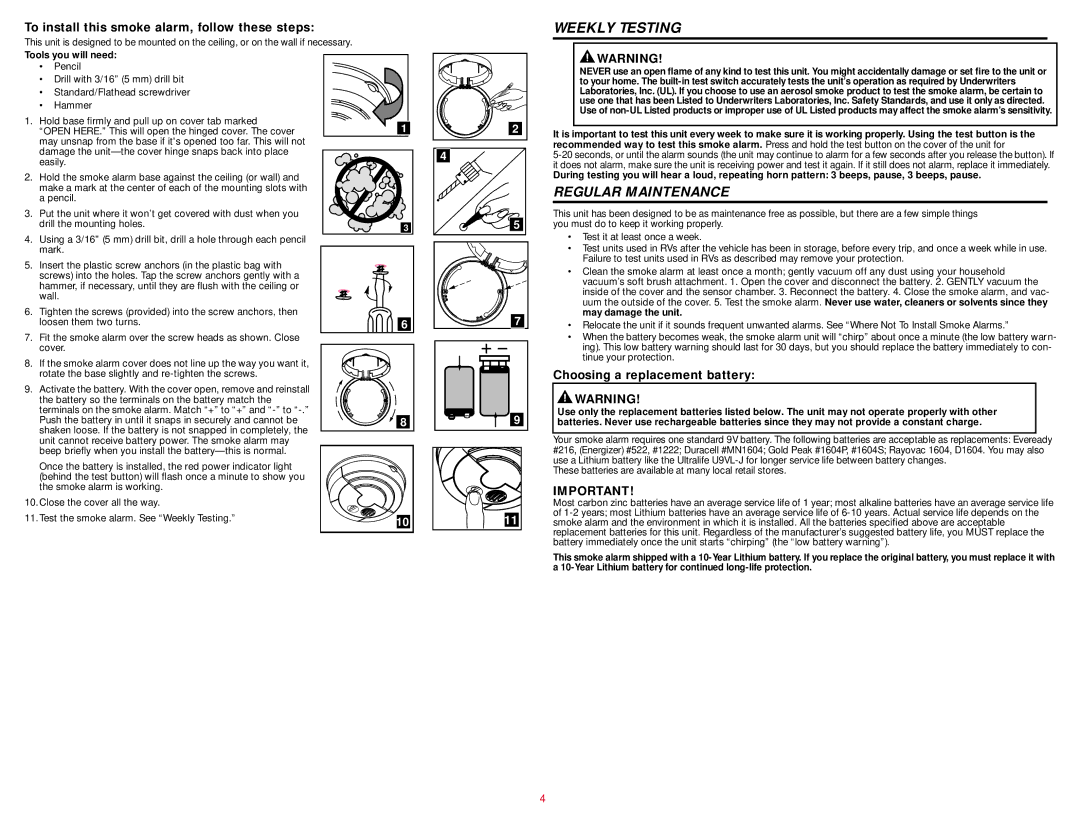Smoke Alarms specifications
BRK electronic smoke alarms have long been recognized as a reliable choice for enhancing fire safety in homes and commercial spaces. These devices incorporate advanced technologies designed to detect smoke and alert occupants, helping to prevent potential disasters.One of the most notable features of BRK smoke alarms is their dual-sensor technology. Many models use both ionization and photoelectric sensors, which together provide a more comprehensive detection system. Ionization sensors are highly responsive to fast-flaming fires, while photoelectric sensors are more effective at detecting smoldering fires. This dual approach ensures that users are alerted to a wider range of fire types, enhancing overall safety.
Another significant characteristic is the incorporation of a 9V battery backup in many BRK models. This feature ensures that the smoke alarm remains functional even during power outages, providing peace of mind. Some units are hardwired, connecting directly to the home’s electrical system, but still include battery backup for added reliability.
BRK smoke alarms also offer user-friendly features such as a hush button, allowing occupants to temporarily silence the alarm in the event of a false alarm, particularly from cooking fumes or steam. This helps to reduce nuisance alarms while ensuring that the device is still fully operational.
In addition to their reliable detection capabilities, BRK smoke alarms often come equipped with a LED indicator. This light offers visual alerts, which can be particularly beneficial for individuals with hearing impairments. Some models also feature a voice alert system, providing verbal notifications that enhance user awareness during emergencies.
Installation is straightforward, with many devices designed for either wall or ceiling mounting. The sleek and modern design of BRK smoke alarms allows them to blend seamlessly into various interior aesthetics, without compromising on functionality.
Another critical aspect of these smoke alarms is their maintenance features. Many BRK models have a self-test button, allowing users to easily check the operational status of the unit, ensuring that it is always ready to perform when needed. Regular maintenance of smoke alarms is essential for optimal performance, and BRK encourages users to replace their units every 10 years as a safety standard.
Overall, BRK electronic smoke alarms combine advanced technology, user-friendly features, and reliable performance, making them an essential component of home and business fire safety plans. With their commitment to quality and safety, BRK continues to be a trusted choice for smoke detection solutions.

